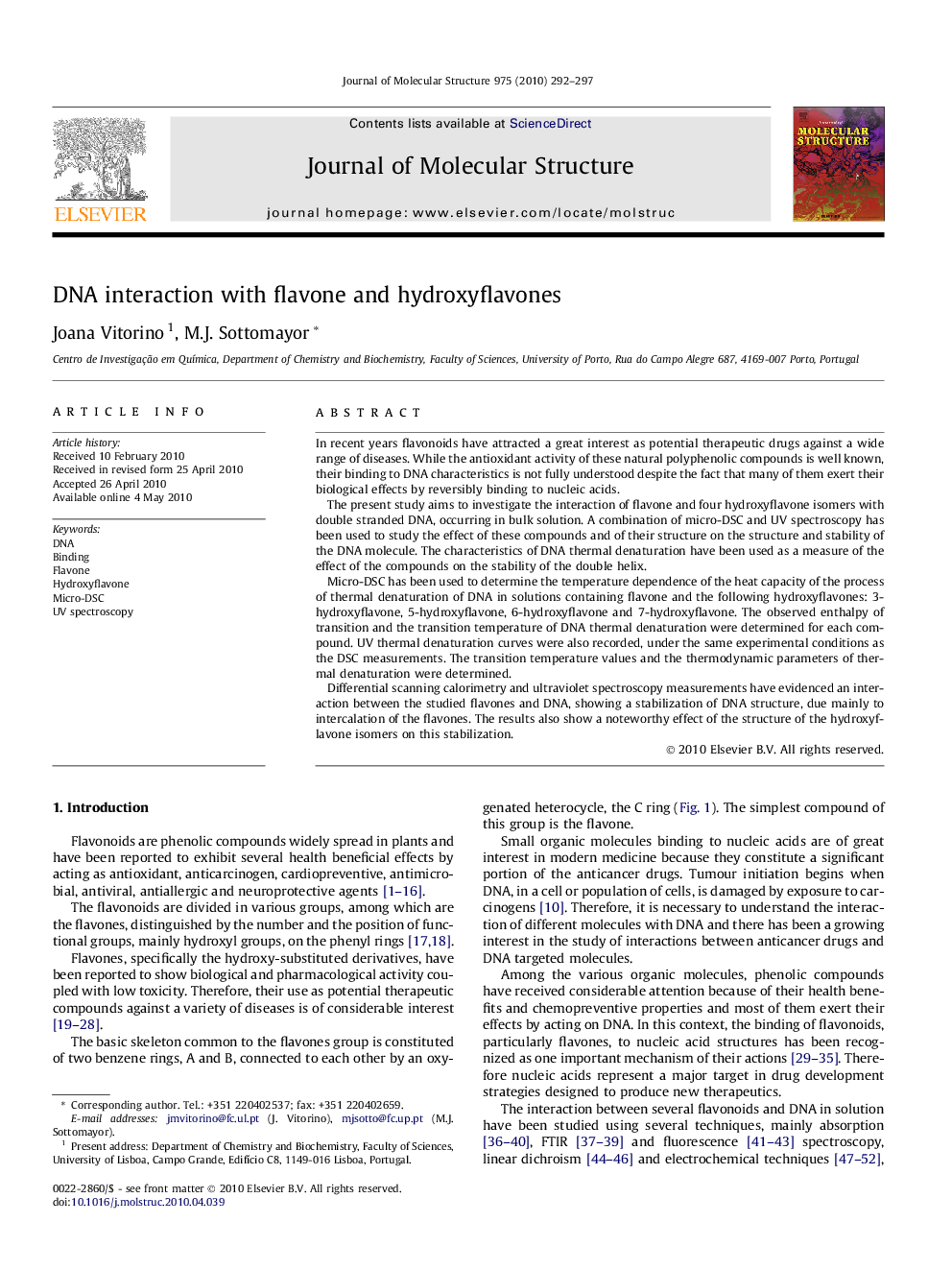| Article ID | Journal | Published Year | Pages | File Type |
|---|---|---|---|---|
| 1409950 | Journal of Molecular Structure | 2010 | 6 Pages |
In recent years flavonoids have attracted a great interest as potential therapeutic drugs against a wide range of diseases. While the antioxidant activity of these natural polyphenolic compounds is well known, their binding to DNA characteristics is not fully understood despite the fact that many of them exert their biological effects by reversibly binding to nucleic acids.The present study aims to investigate the interaction of flavone and four hydroxyflavone isomers with double stranded DNA, occurring in bulk solution. A combination of micro-DSC and UV spectroscopy has been used to study the effect of these compounds and of their structure on the structure and stability of the DNA molecule. The characteristics of DNA thermal denaturation have been used as a measure of the effect of the compounds on the stability of the double helix.Micro-DSC has been used to determine the temperature dependence of the heat capacity of the process of thermal denaturation of DNA in solutions containing flavone and the following hydroxyflavones: 3-hydroxyflavone, 5-hydroxyflavone, 6-hydroxyflavone and 7-hydroxyflavone. The observed enthalpy of transition and the transition temperature of DNA thermal denaturation were determined for each compound. UV thermal denaturation curves were also recorded, under the same experimental conditions as the DSC measurements. The transition temperature values and the thermodynamic parameters of thermal denaturation were determined.Differential scanning calorimetry and ultraviolet spectroscopy measurements have evidenced an interaction between the studied flavones and DNA, showing a stabilization of DNA structure, due mainly to intercalation of the flavones. The results also show a noteworthy effect of the structure of the hydroxyflavone isomers on this stabilization.
